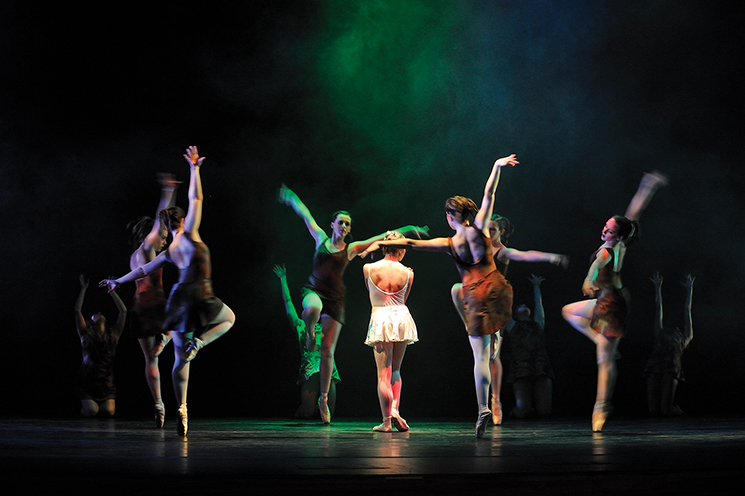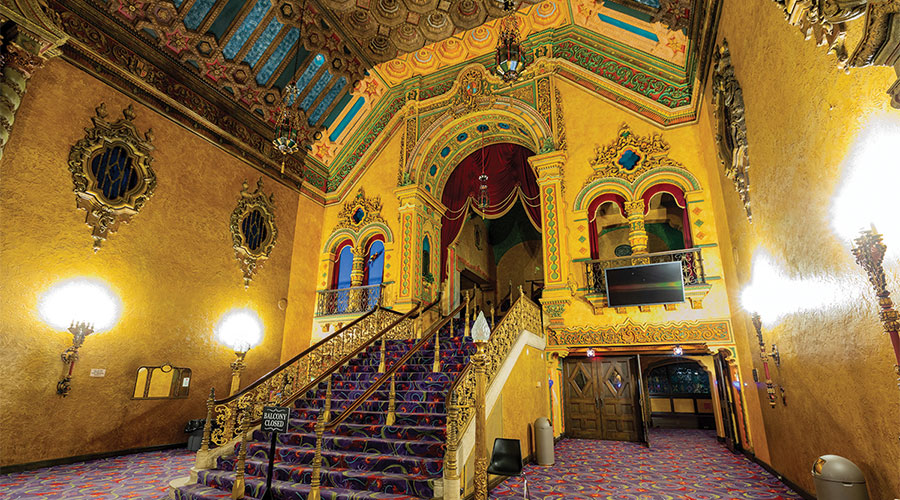
Akron Ballet
When Georgia Nix Miller and her husband, UA President Gary L. Miller, arrived on campus in October 2019, they were looking forward to visiting the city’s eclectic art galleries and becoming patrons of the Akron Symphony Orchestra.
At the time, the couple already appreciated the “gritty creative look of Akron,” recalled Mrs. Miller. “Even the city’s murals were embraced as art, which I found inspiring.”
Of course, thanks to the pandemic, their plans to delve into Akron’s arts scene were put on hold for more than two years. But the time was not wasted. Instead, both Millers devoted their energy to creating a unique university-city initiative known as AkronArts.
“As we settled in, we saw a tremendous amount happening in the arts between the city and the county,” Mrs. Miller said in tracing the steps leading to AkronArts.
According to the recent Akron Cultural Plan, a collaborative effort led by ArtsNow to identify and guide the city’s cultural assets through 2035, “Arts and culture in the Akron metropolitan statistical area is a $1.4 billion industry. Opportunities for growth in arts and culture in Akron can help contribute to overall economic growth.”
“We read the plan and began looking at UA’s wonderful programs in dance, art, music and creative writing,” said Mrs. Miller. “We also observed there seemed to be more of a separation between the University and the city than we wanted.”
The Millers started to dream of ways this wealth of creativity could be unified, and they asked leaders from across campus to join them in the visioning process. After forming the AkronArts Committee on Re-imagining University Arts Programs for Community Revitalization, the initiative was born.
A Sneak Peek
Among the wealth of ideas for the future, a few include brick and mortar. Plans are underway to adapt current facilities for new uses and ideas, including reimagining E.J. Thomas Hall and the Polsky Building.
A renewed focus will be placed on the Northeast Ohio Master of Fine Arts in Creative Writing program and the work of The University of Akron Press. In addition, The National Center for Choreography at UA will be expanded to provide the community with more exposure to dance through its extensive national and international connections.
“None of this would be possible without the hard work of the committee, led by chairman Dr. Joe Urgo,” said Mrs. Miller. “I celebrate each one of the faculty leaders. It is normal for all of us to be turf-oriented in our professions. However, everyone found a common path to work together, it was beautiful.”
When the Millers began reaching out to community members to talk about the University and the arts, Akron Civic Theatre Executive Director Howard Parr became “an incredible advocate for the concept.”
Now Parr serves as the president’s special advisor for arts and culture. He noted that the “strength and vitality of downtown Akron, The University of Akron and the entire region are inextricably linked. By working together in a strategic way, we have the unique opportunity to leverage the existing and to create new programming that will brand our community in a way that could not otherwise be achieved.
“Simply put,” he added, “the potential new whole of this collaborative approach is far greater than the sum of its parts.”

Akron Civic Theatre
An Academic Leader
Another key player in moving AkronArts forward is Mitchell S. McKinney, who joined UA as the dean of Buchtel College of Arts and Sciences in July of 2021. “I came on board to help develop our world-class offerings in performing, visual and literary arts,” said McKinney.
“Our focus on fulfilling our urban research mission, and the access that we have here at The University of Akron to world class programs, is to provide these offerings to enrich our community,” he added.
One key piece of AkronArts is the economic development component. “This is what Howard Parr brings,” McKinney explained. “How do we work more in tandem and collaboration with what is happening in the city of Akron, particularly the Civic Theatre, the Goodyear Theater and E.J. Thomas Hall?”
A major part of AkronArts will be the renaissance of downtown’s Polsky Building. “This is a good example of revitalization and creating a space that will serve as the front door of the University,” said McKinney. “The Polsky Building is a literal example of opening our front door to the community on Main Street and inviting them in to engage with our students and faculty and arts—and to understand how we enrich the community.”
President Miller said he is confident this commitment to the arts will energize alumni in the same way the physical transformation of the campus did at the dawn of the 21st century. “It will speak to parents of prospective students as they evaluate the benefits of a regional university. And it will stimulate our student population as we invite them into a campus offering new opportunities for creative development, expression and engagement.”
by Janet Chismar-Hardie '92
- Learn more about AkronArts
- Visit the Myers homepage
- See the Polsky renaissance
- Get to Know Dean McKinney
